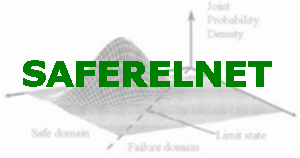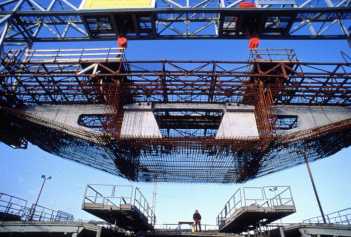 |
 |
 |
 |
| Thematic Network on Safety and Reliability of Industrial Products, Systems and Structures | |||
| quinta-feira, 18 de dezembro de 2025 | |||
       |
| Meetings | |||||||||||||||||||||||||||||||||||||||||||||
3rd General SAFERELNET Meeting
in conjunction with the Workshop on Acceptable Safety Levels, and the Workshop on Integration of Risk and Reliability Copenhagen, May 19 - 21, 2003 Day 3: Wednesday, 21st May Workhop on Integration of Risk and Reliability (WP4)
The Workshop is being organised to present and discuss the approaches for the integration of Quantitative Risk Analysis (QRA), Structural Reliability Analysis (SRA) and Human & Organisational Factor Analysis (H&OFA). The conventional application of QRA relies on historical failure data for system components, which are sometimes combined with fault-tree and event-tree techniques to produce the probability of outcome events. Methods of structural reliability analysis are used which predict the failure probabilities using mechanical models for resistance and loading combined with probability distributions for the uncertain material properties and loads. Both the QRA and SRA techniques do not explicitly take account of the contribution of human and organisational factors on accident causation and its consequences. In general, a total risk analysis of a major infrastructure or industrial system needs to take account of all the sources of uncertainty and risks from all hazard sources. This would need an integration of the QRA, SRA and H&OFA techniques. These techniques have hitherto been developed in isolation and do not have a consistent theoretical/philosophical basis. The objective of this workshop is to discuss this issue and identify approaches for the effective integration of these techniques. Contributions in the form of presentations or discussions are invited on the following topics: • Key differences between the QRA, SRA & H&OFA techniques • Applications where an integrated approach would be beneficial • Previous examples of application of the integrated approach • Theoretical bases for integration of the techniques • Steps to be taken for promoting the integration of approaches
|
|||||||||||||||||||||||||||||||||||||||||||||
| (Back) | |||||||||||||||||||||||||||||||||||||||||||||
| Home | Overview | Structure | Workplan | Members | Meetings | Login |
| ©
2002 SAFERELNET Optimized for Internet Explorer 5+ |